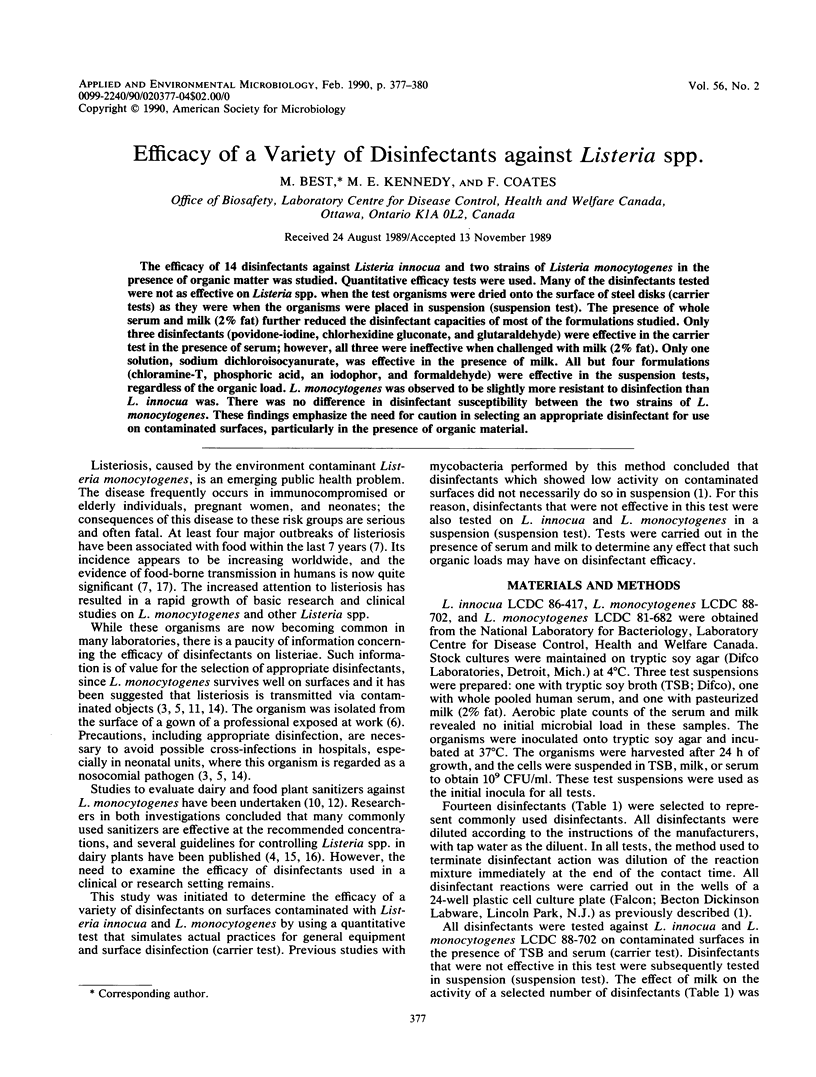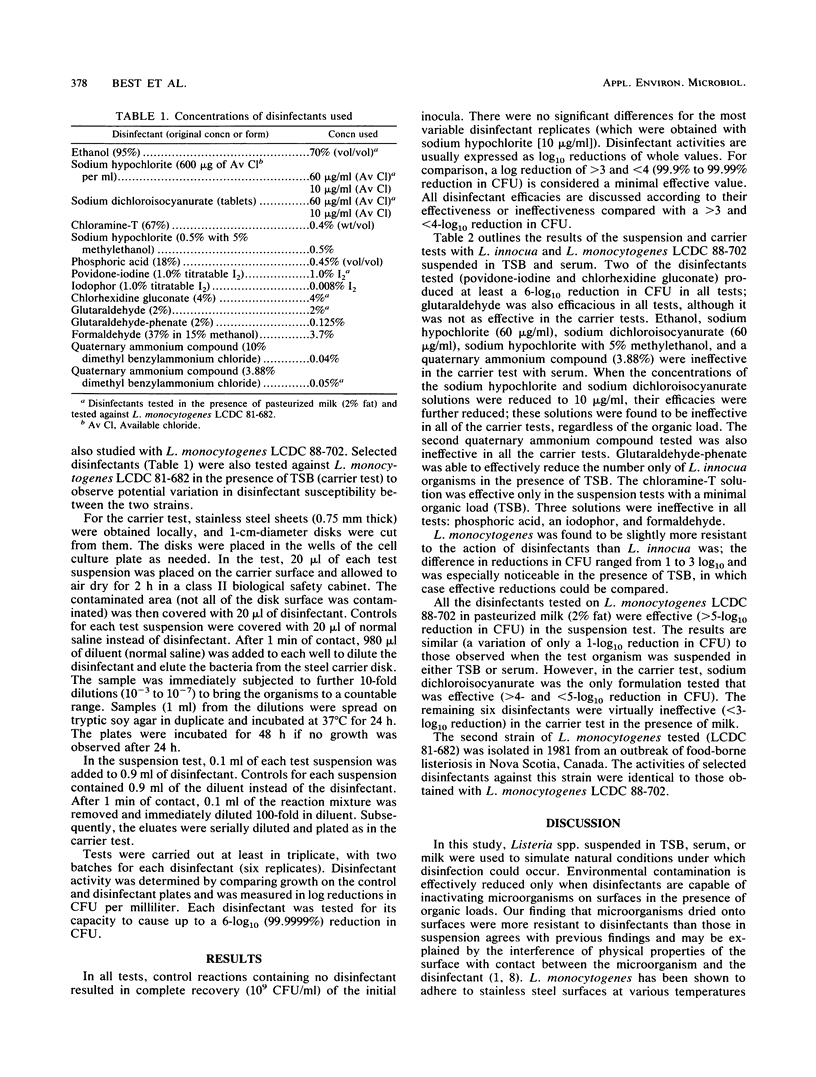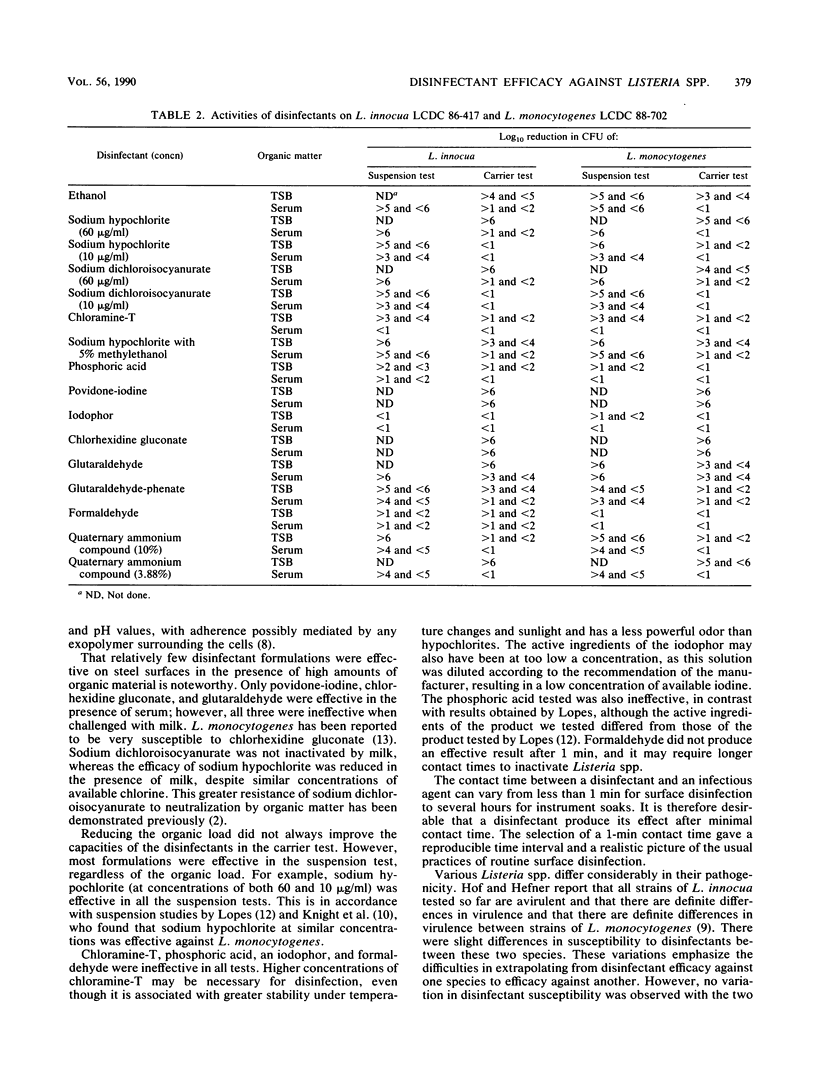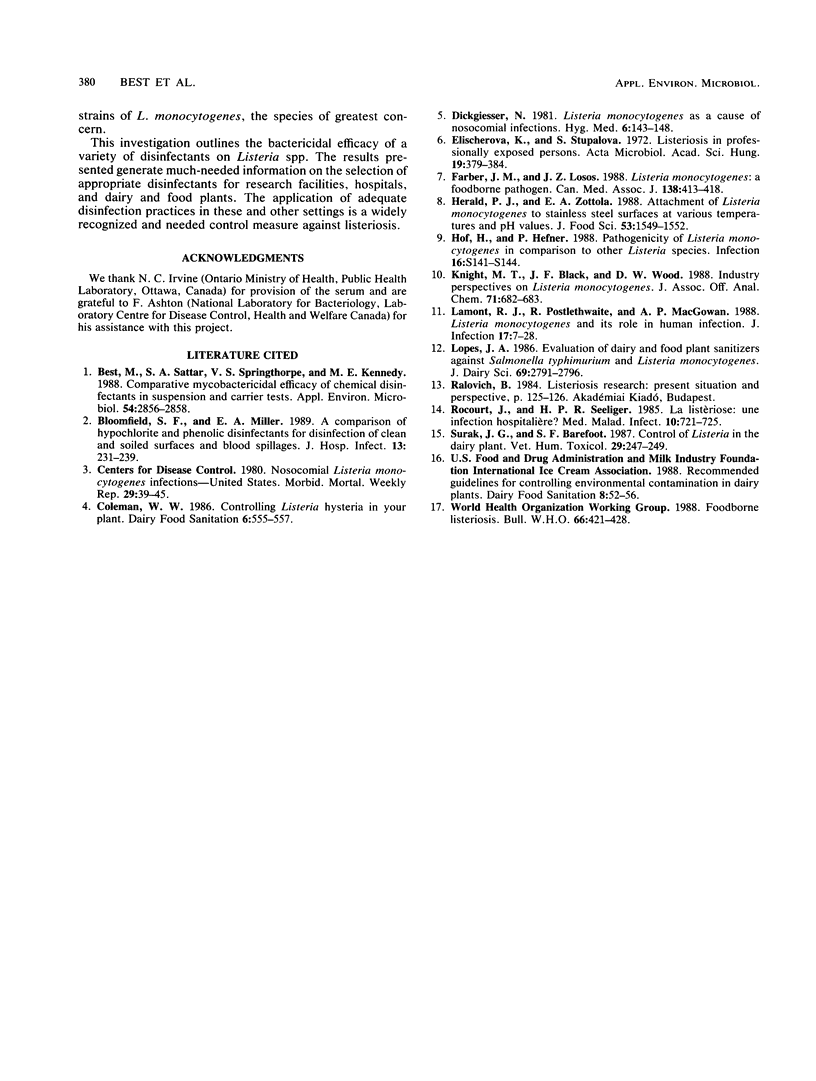Abstract
The efficacy of 14 disinfectants against Listeria innocua and two strains of Listeria monocytogenes in the presence of organic matter was studied. Quantitative efficacy tests were used. Many of the disinfectants tested were not as effective on Listeria spp. when the test organisms were dried onto the surface of steel disks (carrier tests) as they were when the organisms were placed in suspension (suspension test). The presence of whole serum and milk (2% fat) further reduced the disinfectant capacities of most of the formulations studied. Only three disinfectants (povidone-iodine, chlorhexidine gluconate, and glutaraldehyde) were effective in the carrier test in the presence of serum; however, all three were ineffective when challenged with milk (2% fat). Only one solution, sodium dichloroisocyanurate, was effective in the presence of milk. All but four formulations (chloramine-T, phosphoric acid, an iodophor, and formaldehyde) were effective in the suspension tests, regardless of the organic load. L. monocytogenes was observed to be slightly more resistant to disinfection than L. innocua was. There was no difference in disinfectant susceptibility between the two strains of L. monocytogenes. These findings emphasize the need for caution in selecting an appropriate disinfectant for use on contaminated surfaces, particularly in the presence of organic material.
Full text
PDF



Selected References
These references are in PubMed. This may not be the complete list of references from this article.
- Best M., Sattar S. A., Springthorpe V. S., Kennedy M. E. Comparative mycobactericidal efficacy of chemical disinfectants in suspension and carrier tests. Appl Environ Microbiol. 1988 Nov;54(11):2856–2858. doi: 10.1128/aem.54.11.2856-2858.1988. [DOI] [PMC free article] [PubMed] [Google Scholar]
- Bloomfield S. F., Miller E. A. A comparison of hypochlorite and phenolic disinfectants for disinfection of clean and soiled surfaces and blood spillages. J Hosp Infect. 1989 Apr;13(3):231–239. doi: 10.1016/0195-6701(89)90003-0. [DOI] [PubMed] [Google Scholar]
- Elischerová K., Stupalová S. Proceedings: Listeriosis in professionally exposed persons. Acta Microbiol Acad Sci Hung. 1972;19(4):379–384. [PubMed] [Google Scholar]
- Farber J. M., Losos J. Z. Listeria monocytogenes: a foodborne pathogen. CMAJ. 1988 Mar 1;138(5):413–418. [PMC free article] [PubMed] [Google Scholar]
- Hof H., Hefner P. Pathogenicity of Listeria monocytogenes in comparison to other Listeria species. Infection. 1988;16 (Suppl 2):S141–S144. doi: 10.1007/BF01639737. [DOI] [PubMed] [Google Scholar]
- Knight M. T., Black J. F., Wood D. W. Industry perspectives on Listeria monocytogenes. J Assoc Off Anal Chem. 1988 May-Jun;71(3):682–683. [PubMed] [Google Scholar]
- Lamont R. J., Postlethwaite R., MacGowan A. P. Listeria monocytogenes and its role in human infection. J Infect. 1988 Jul;17(1):7–28. doi: 10.1016/s0163-4453(88)92236-0. [DOI] [PubMed] [Google Scholar]
- Lopes J. A. Evaluation of dairy and food plant sanitizers against Salmonella typhimurium and Listeria monocytogenes. J Dairy Sci. 1986 Nov;69(11):2791–2796. doi: 10.3168/jds.S0022-0302(86)80731-7. [DOI] [PubMed] [Google Scholar]
- Surak J. G., Barefoot S. F. Control of Listeria in the dairy plant. Vet Hum Toxicol. 1987 Jun;29(3):247–249. [PubMed] [Google Scholar]


